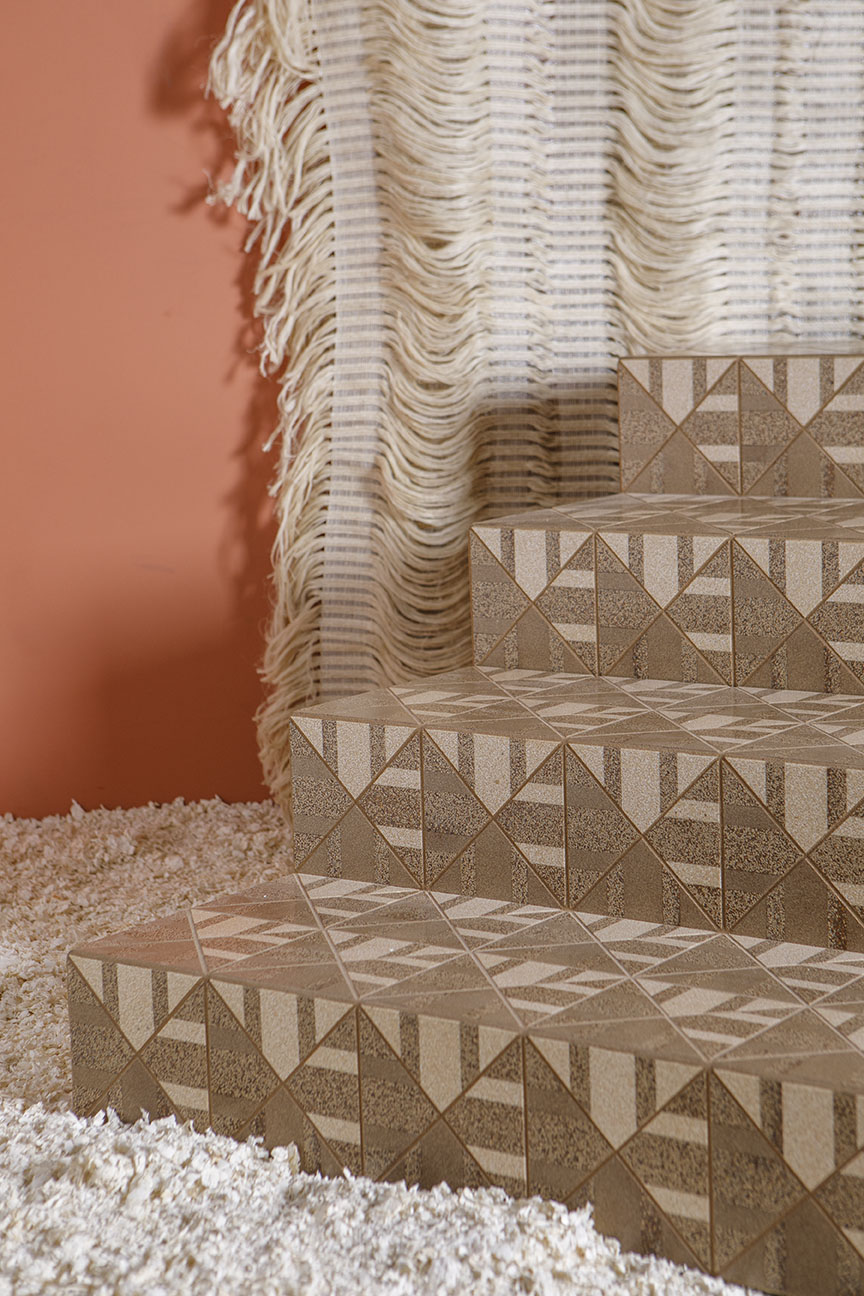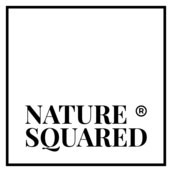It was a serendipitous moment when I met Lay Koon Tan, the co-founder of Nature Squared, at Rosanna Orlandi’s gallery in 2019 during Milan Design Week. I was entranced by the materials they had crafted, and so we started talking. We have had many exciting conversations since then, especially about sustainability and circular design.
Initially Lay Koon invited me to train their weavers and design textiles using natural fibres. However, when I visited their Cebu factory, I saw how extensive their supply chain is, and immediately recognised the enormous potential for making a scalable positive impact through design and craftsmanship using other materials. This is what fascinates me as a designer.
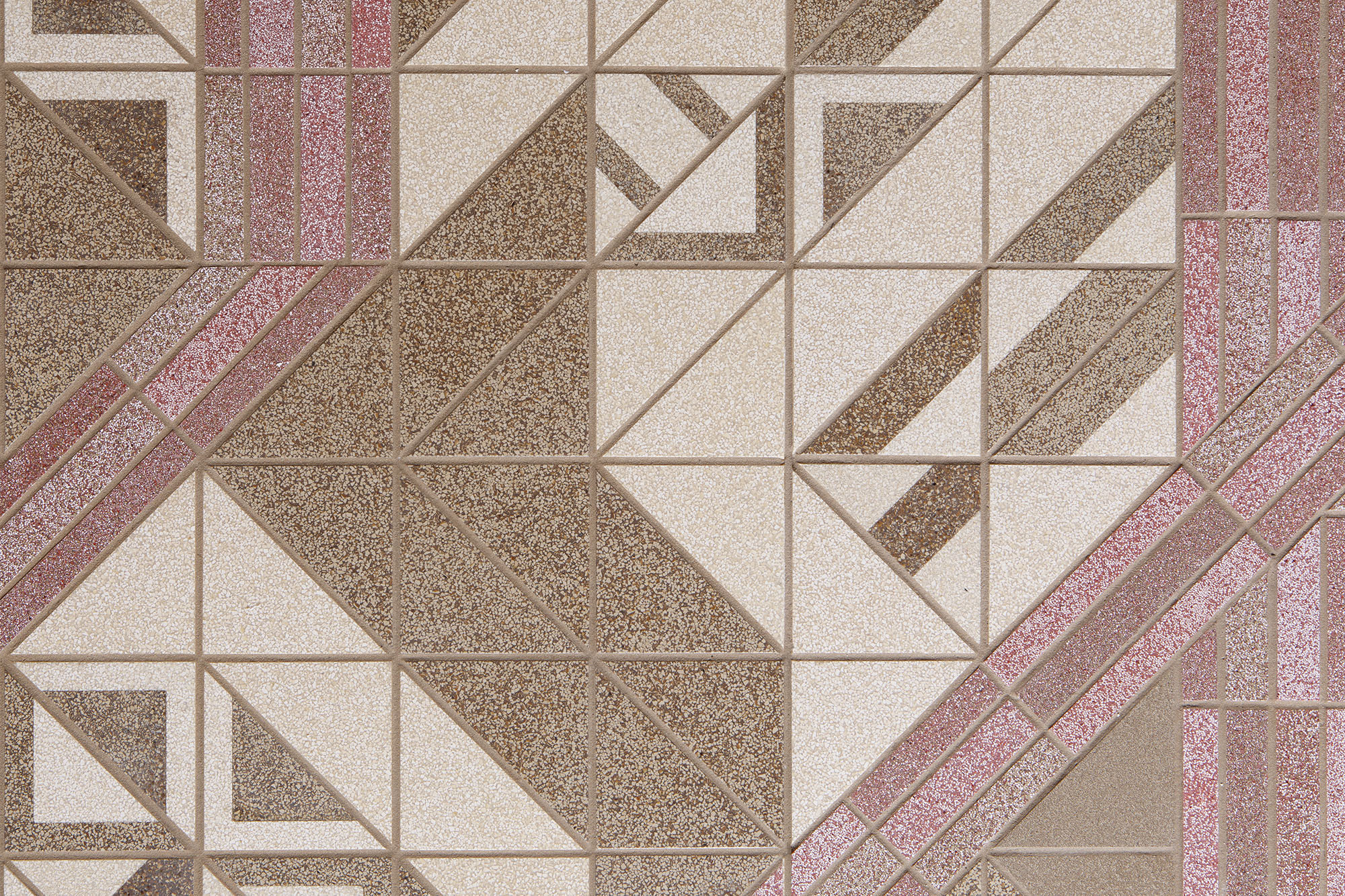
Rossana has a reputation for spotting innovative design and up-and-coming creatives. What was it like to work with her on this particular installation?
In 2019 Lay Koon and I flew to Milan and met with Rossana to present our concept for The Barn – an installation of eggshell waste tiles to be installed in the gallery’s courtyard. We brought our prototype with us, and she had so many other exciting ideas about what we could do with it – in fact, having eggshell tiles on the floor was her idea!
Rossana was particularly fascinated that we wanted people to see waste differently, to experience for themselves how nature can be integrated into living spaces in new ways. This installation allows people to see and touch the tiles, and truly understand how what it is all about.
Rossana is experienced in design, and also understands sustainability. She has been a pioneer in this field, and a leader in showing how designers can play an important role.
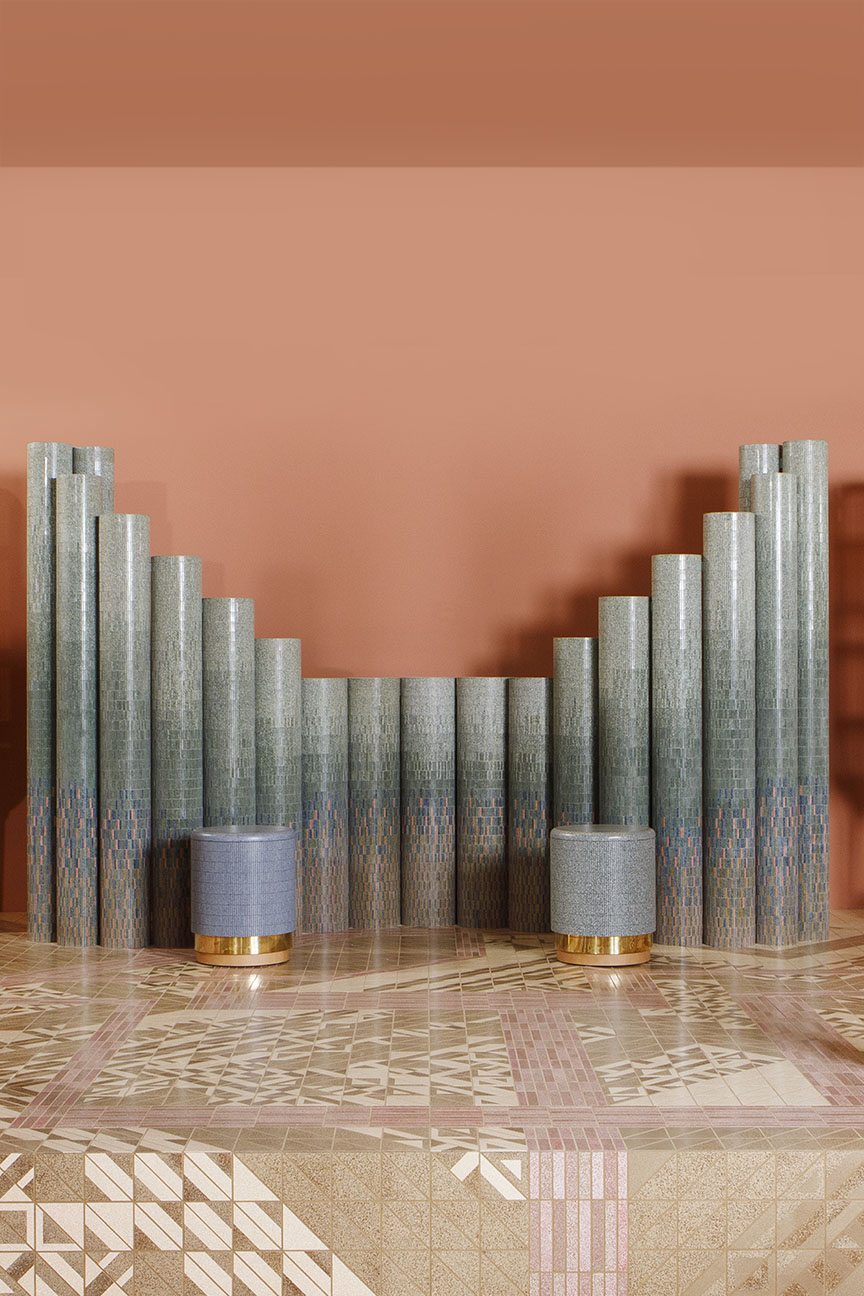
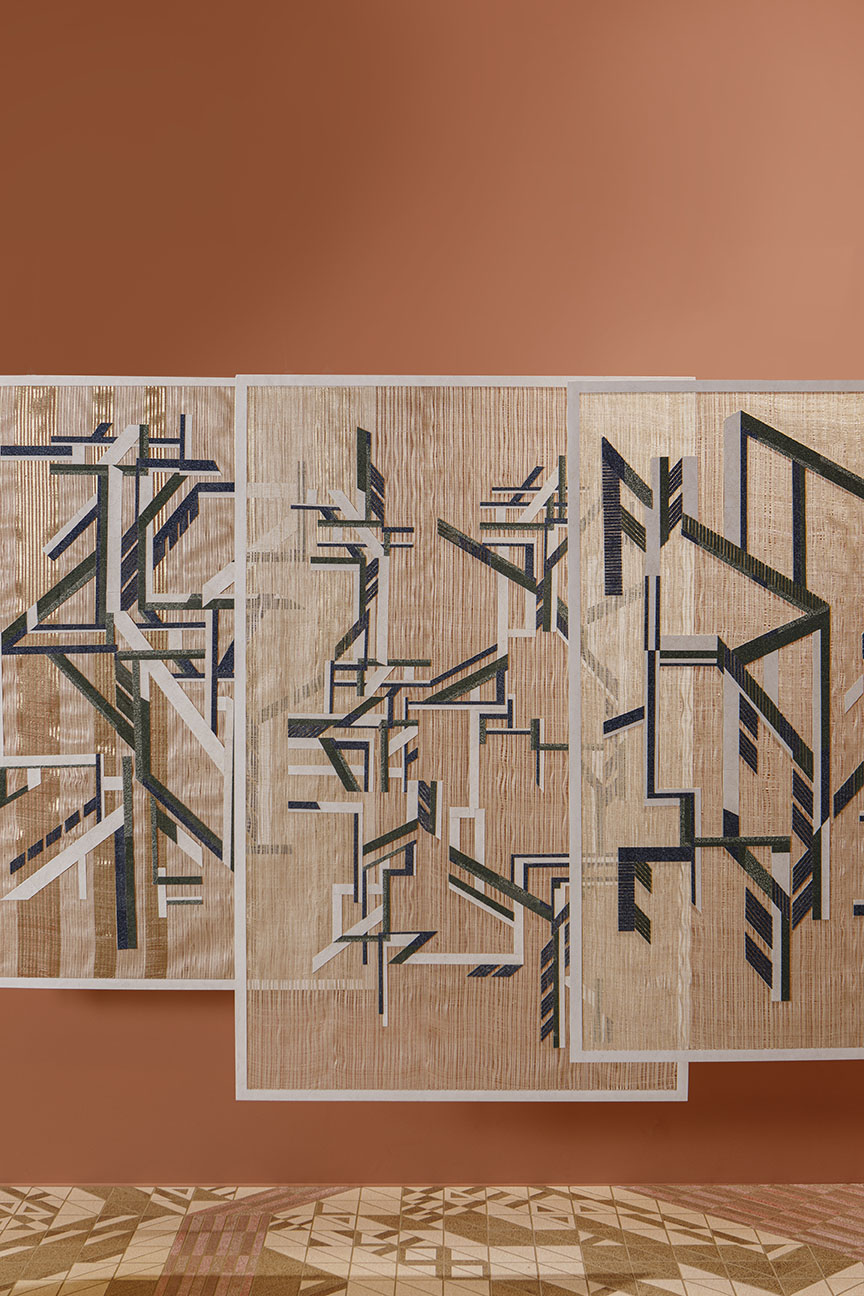
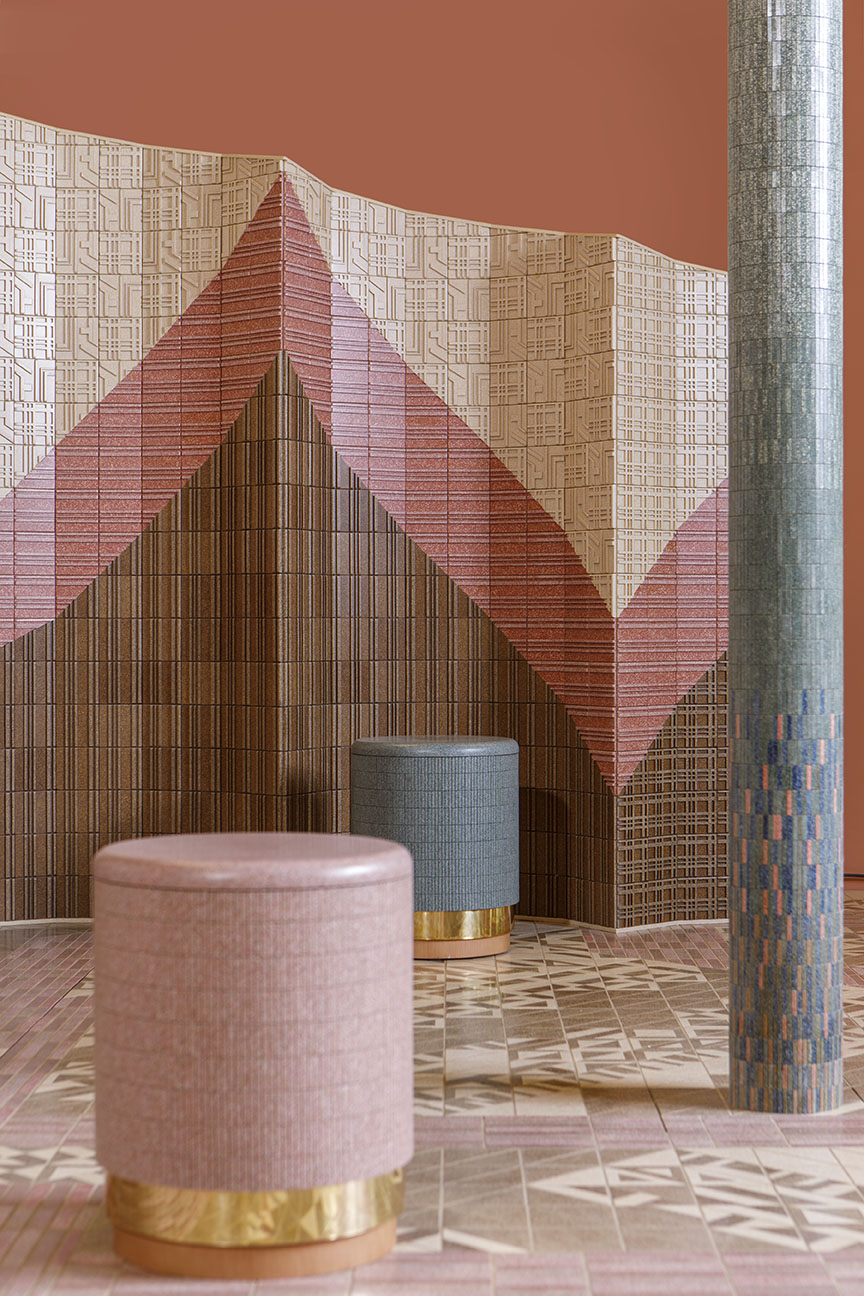
Tell me more about what you will be showing there?
The Barn is an installation, custom-made out of a combination of our bespoke and standard CArrelé eggshell tiles. Our goal is to show just what is possible with this remarkable material, and we will have our first collection on offer for orders.
We have used over fifteen thousand waste eggshells that would otherwise have gone into landfill to make the installation.
CArrelé ranges from natural sand tones to blue, pink and green.
The colours are achieved either by a natural baking process or by adding organic dye from plant extracts, such as madder, chorophyll, and indigo.
The palette allows designers to bring nature’s colours indoors in a subtle, yet powerful way. The flooring comprises rectangular madder, and two-tone light and dark baked triangular tiles, which I have arranged in an abstract pattern. To show how the tiles can be applied to a curved surface, I created a sinuous standing screen using 3D tiles, and covered the courtyard’s existing columns in different shades of mini-tiles.
I also made stools paved in mini-tiles, and a collection of eggshell accessories so that people can sit down and feel the texture of the tiles. And I’ve done some textile art panels with traditional eggshell inlay on one side, and eggshell tiles on the other.
I am a material designer, not an interior designer, so The Barn is all about providing an inspirational scenography that I hope will inspire designers.
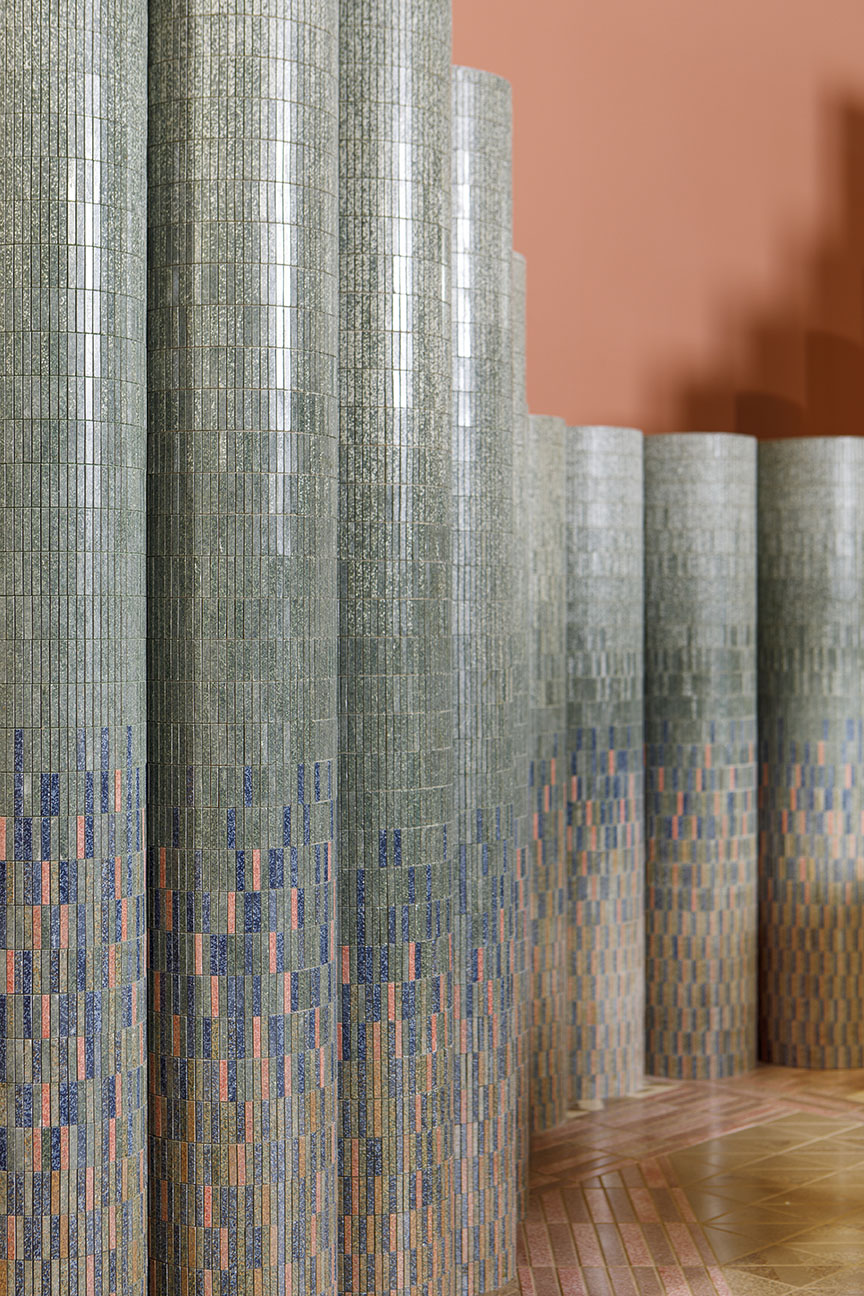
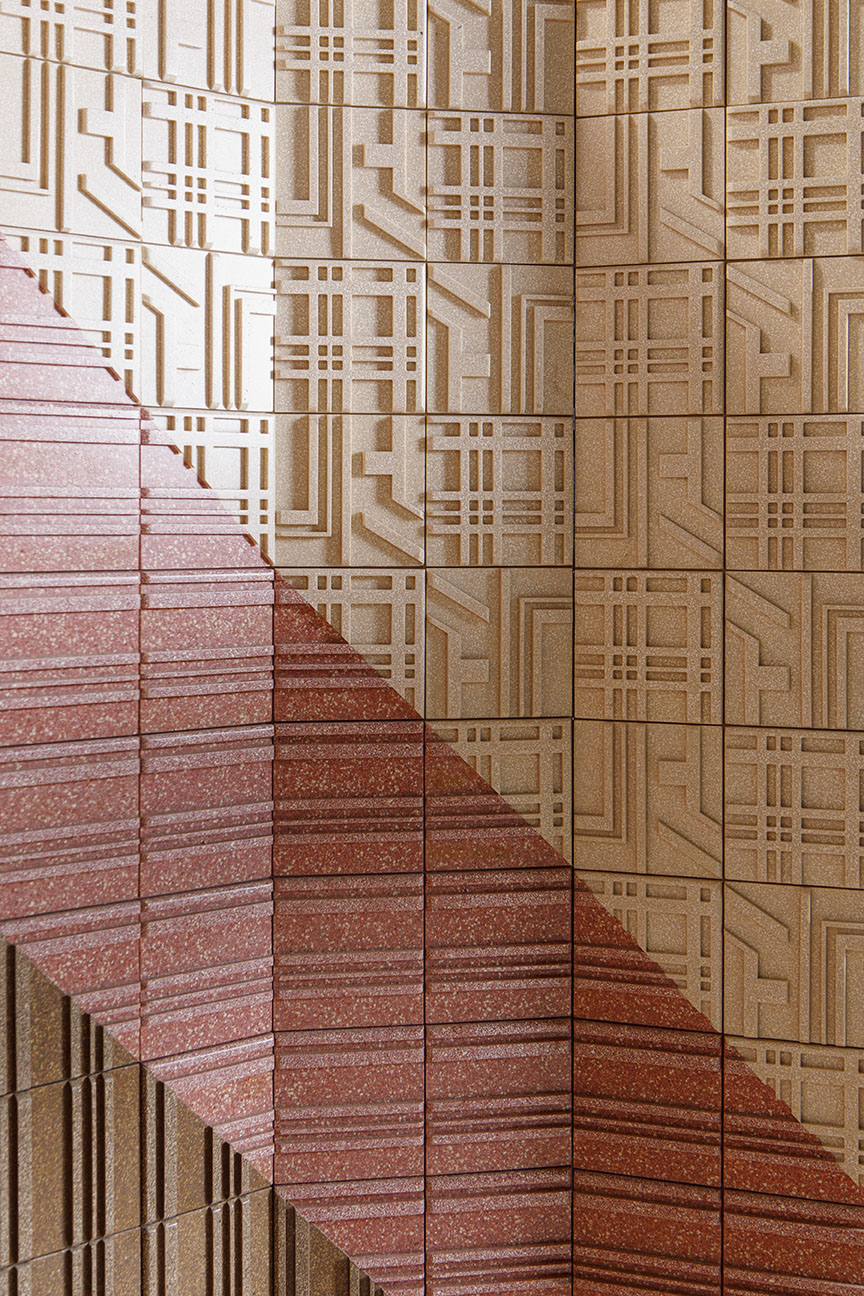
Initially I envisaged CArrelé as an eggshell paste, but then I realised that engineering it into tiles would allow for easier and broader application. The Barn is a combination of our standard offering of tiles, and as we are launching it during Milan Design Week, we want to show visitors how it can be applied in a bespoke, challenging context too, so it includes some bespoke applications of CArrelé in the form of paste for artwork or to create a complex gradation effect.
What makes these eggshell tiles different to other ceramic tiles currently available to interior designers?
CArrelé is a unique handmade biophyllic product that has a significant positive impact on the environment. Being a bioceramic, it is a great way for designers to show their commitment to natural materials. Instead of the negatives often associated with interior design, you can choose to divert landfill and transform the waste into a useful and beautiful surface. Imagine having a restaurant or breakfast buffet counter covered in eggshell tiles. It is such a great storyline!
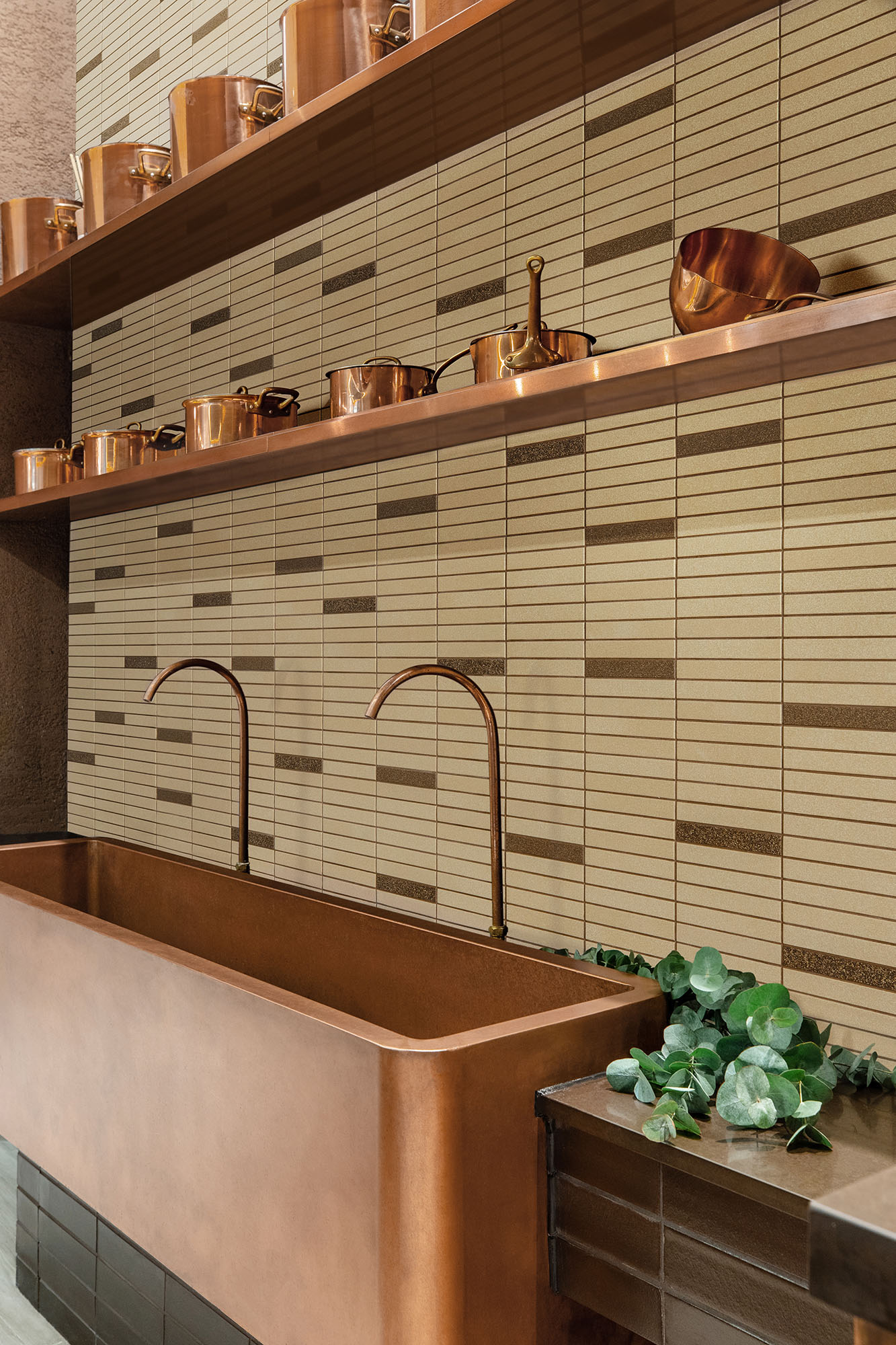
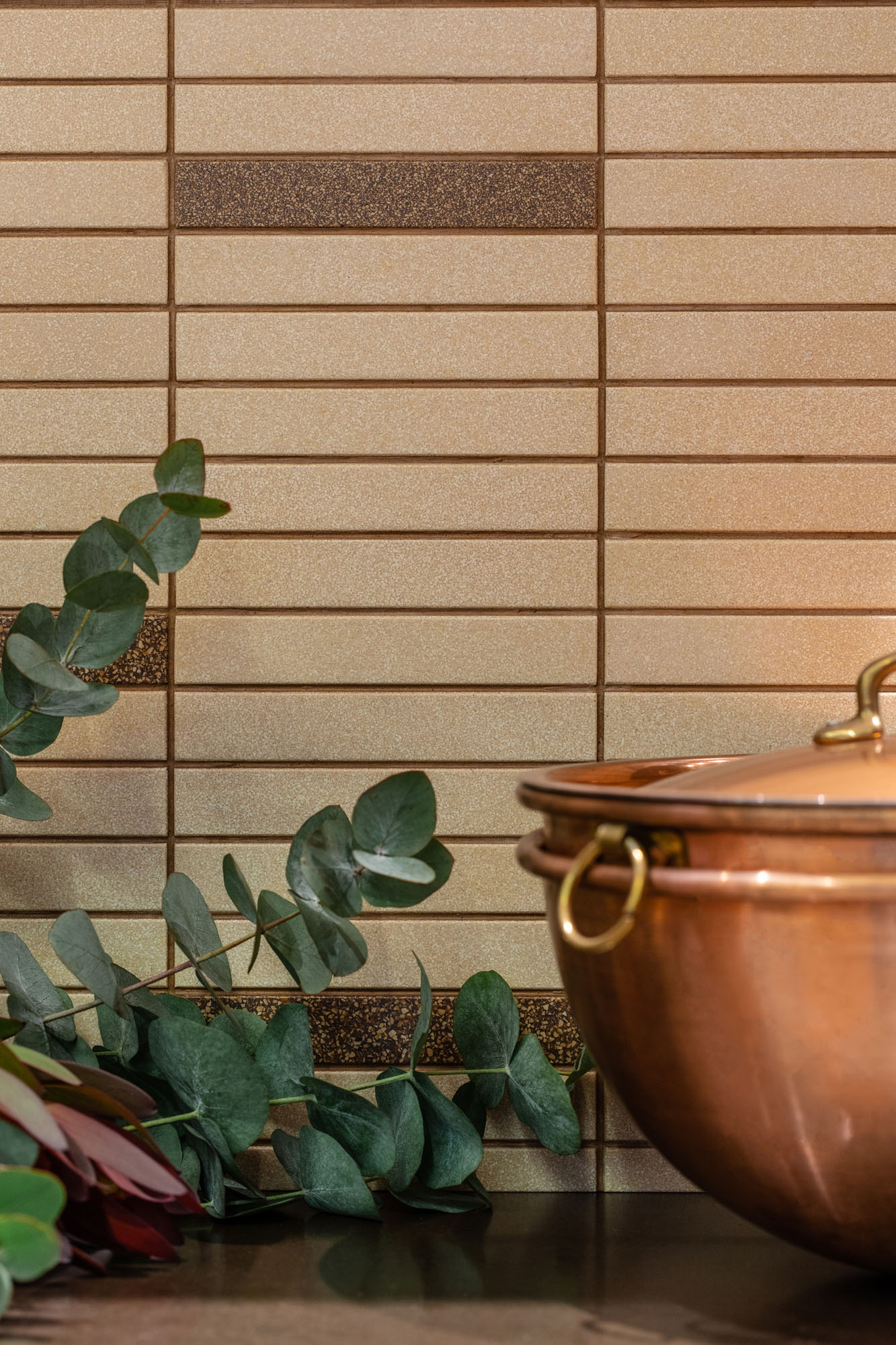
Tell me about the abaca textiles? What is this woven product?
We shall be launching an abaca textile collection called Pastorale after Milan, and at The Barn we hint what it looks like. Abaca is a large herbaceous Philippine plant of the banana family that yields Manila hemp. It has amazing natural properties such as UV resistance, and is light yet incredibly strong, so ideal for making hardwearing textiles. My new collection for Nature Squared is of open weaves that allow light to pass through and project indoors.
At The Barn, I designed four chicken coop-inspired cabinets that show off the Pastorale textile, and also three screens, using the textile as a base for eggshell inlay.
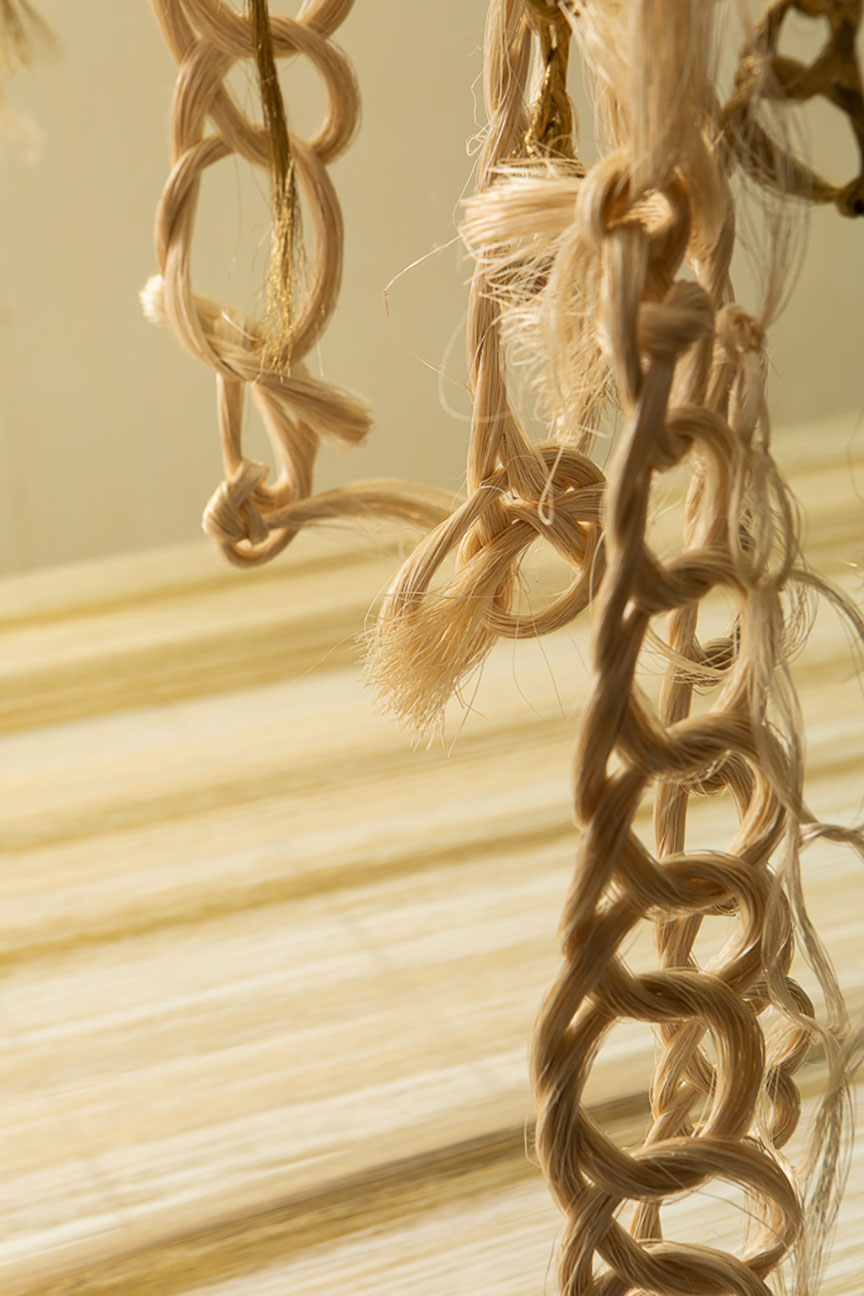
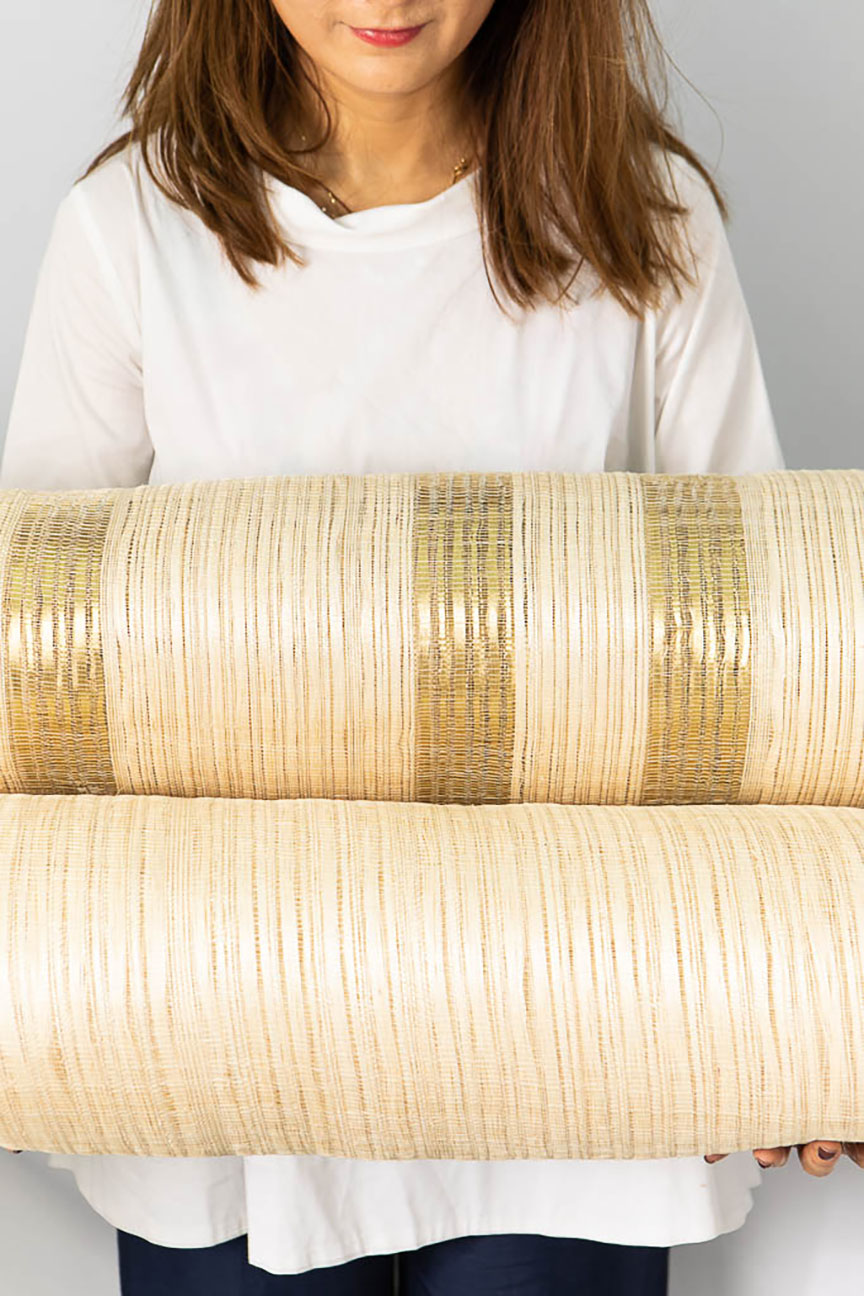
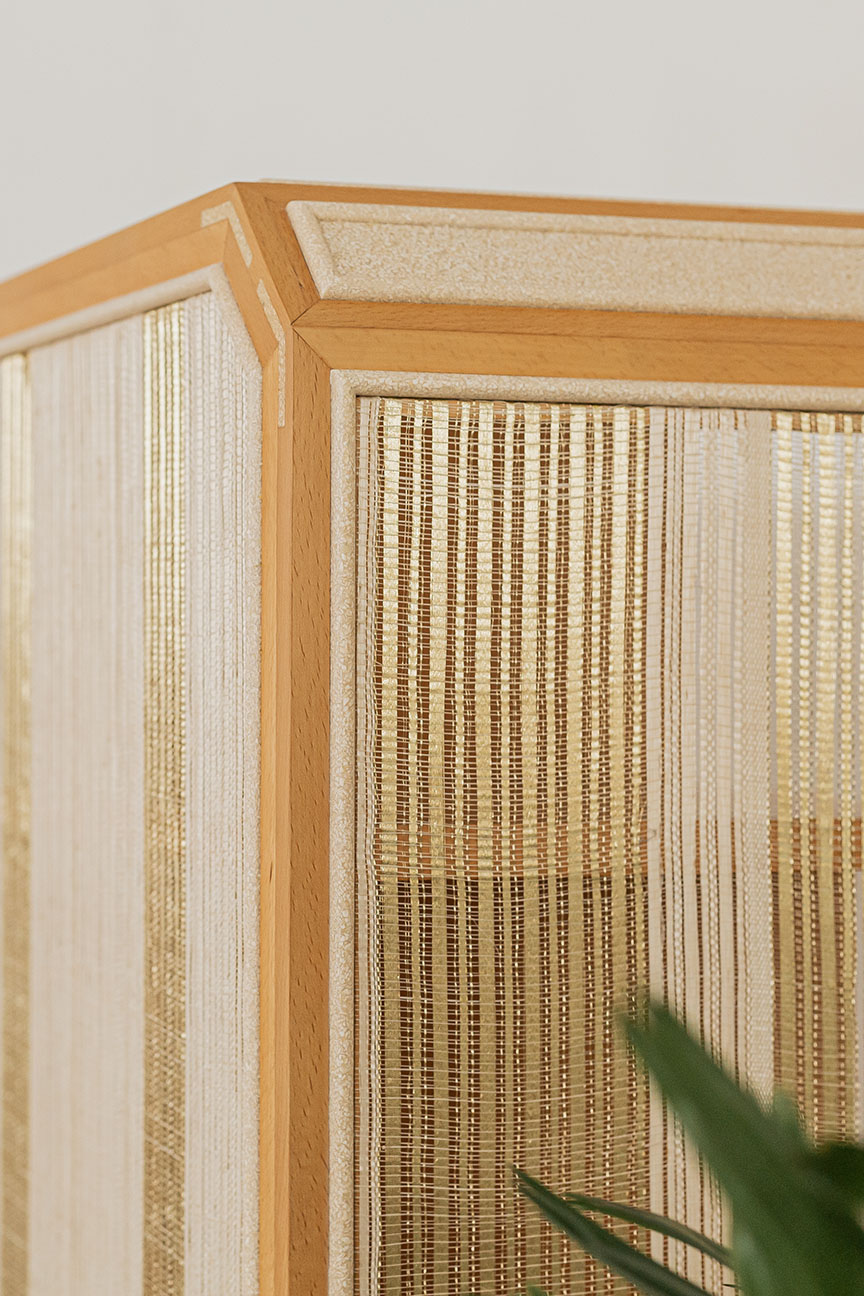
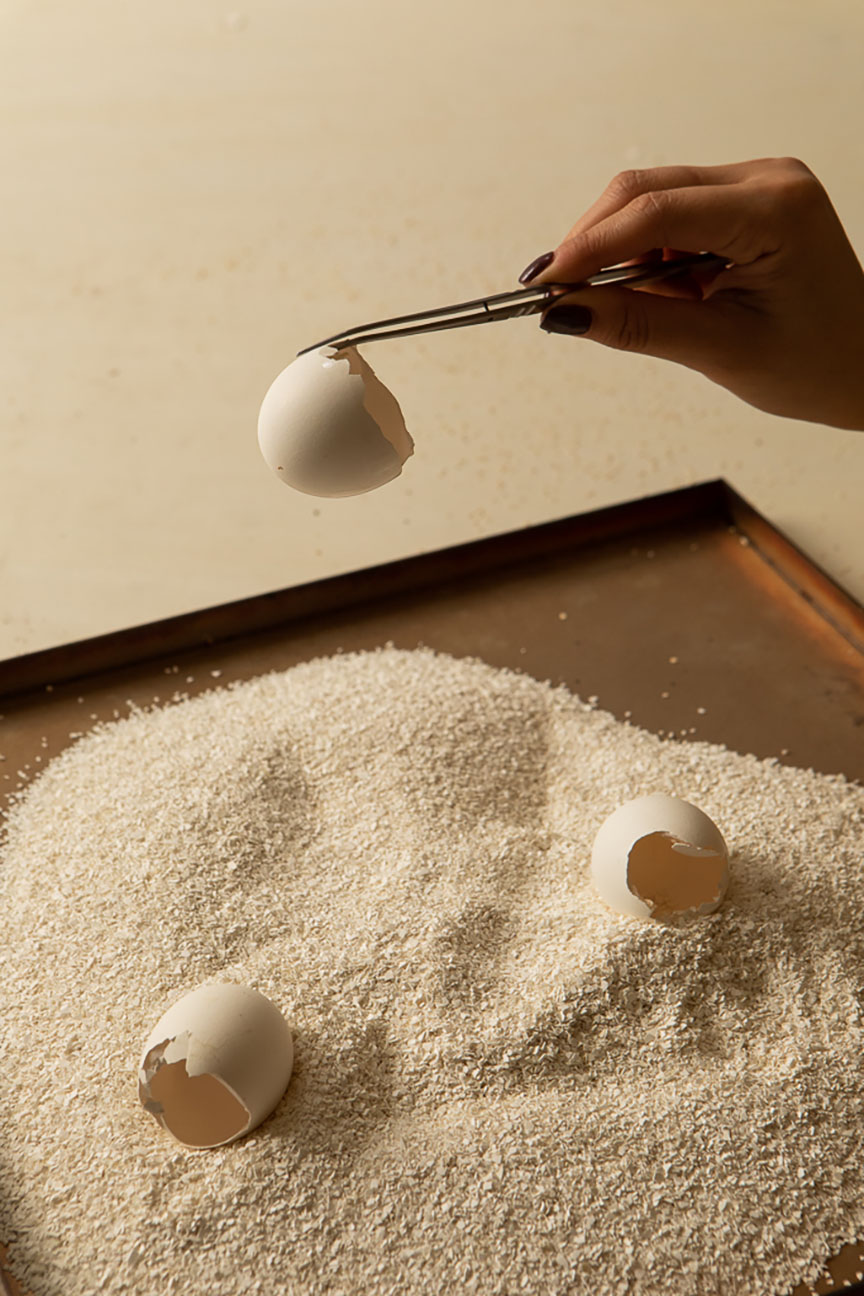
What made you choose eggshell waste as your first material to work with?
During my initial research into the earth’s resources, I discovered that five per cent of our planet is made out of calcium carbonate. Nature Squared has a reliable supply chain of eggshell waste, so it was a natural choice.
Designing a material like this is not just about its look; it meant I had to understand the complete supply chain and how it would be received by the interior design community.
One of the most difficult tasks is to explain to people that they are not just buying an innovative and beautiful product, they are supporting a better ecosystem. It’s a long-term engagement.
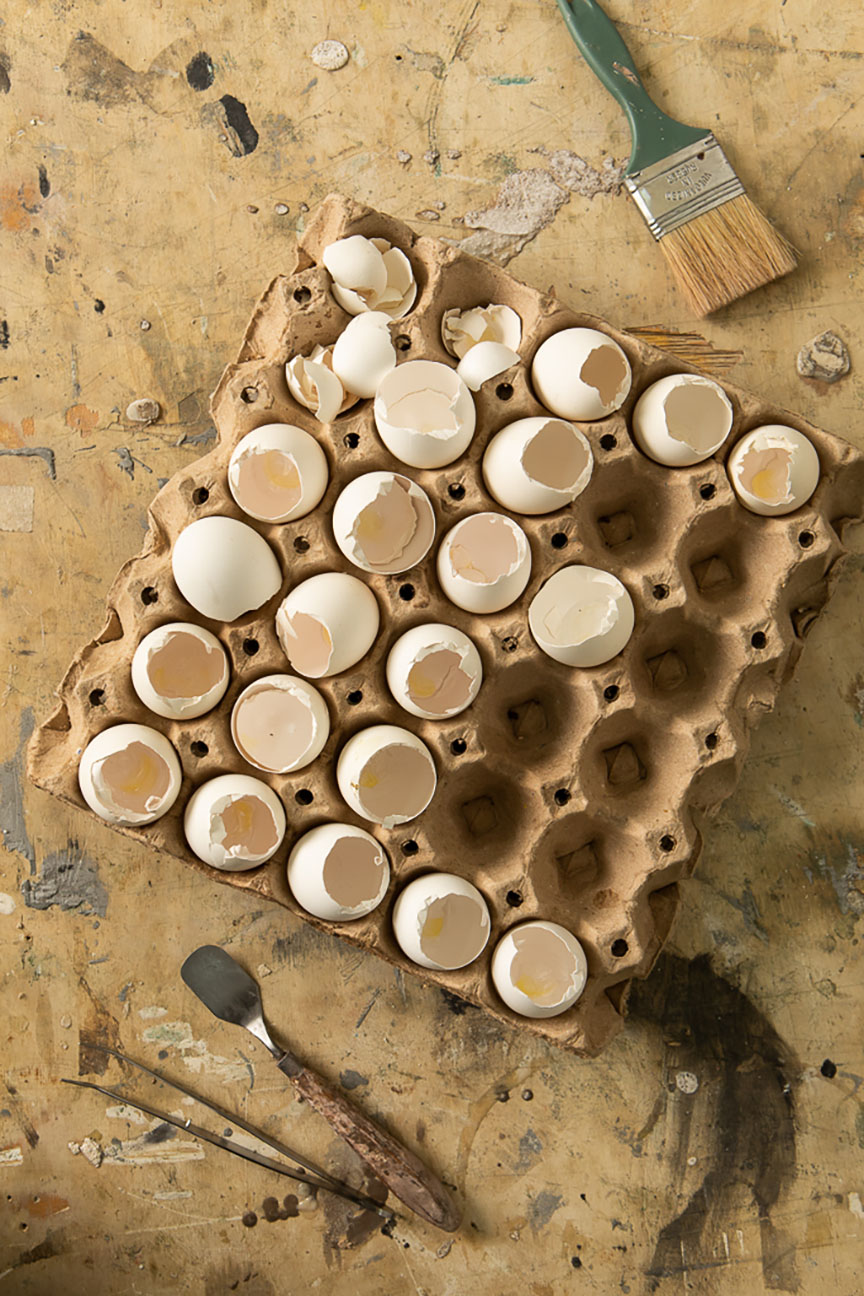

What has been new, and a highlight for you as the designer of this project?
Everything has been new to me. I trained and am known as a textile designer, so in the past a lot of my projects have focused on fibre design and textile techniques. This is the first time I have explored turning waste into an interior material on a commercial scale, and also the first time I have worked with calcium carbonate. I spent two months in Nature Squared’s factory in Cebu to perfect our formula.
The highlight of this project is knowing exactly who benefits directly from the egg loop design, and how the positive impact is multiplied as more interior designers buy into it.
Do you think that the pandemic has forced the interior design world towards a more nuanced understanding of eco-friendly materials?
I think it has definitely sped things up. People are more aware of the link between their decisions and the environmental consequences. In particular, over the past year, climate change has become more obvious than ever.
What inspired the pre-defined patterns that you have designed and which will be available to order at Design Week?
Some of my pre-defined patterns reference classic tile sequences such as pinstripes and Harrington. I play with the combination of our basic shapes and range of colours as well as the different fragment sizes of the eggshell to add interest and texture.
Where do you see the tiles being used?
Everywhere, from floor to ceiling – on columns and stairs as well as in kitchens and bathrooms.
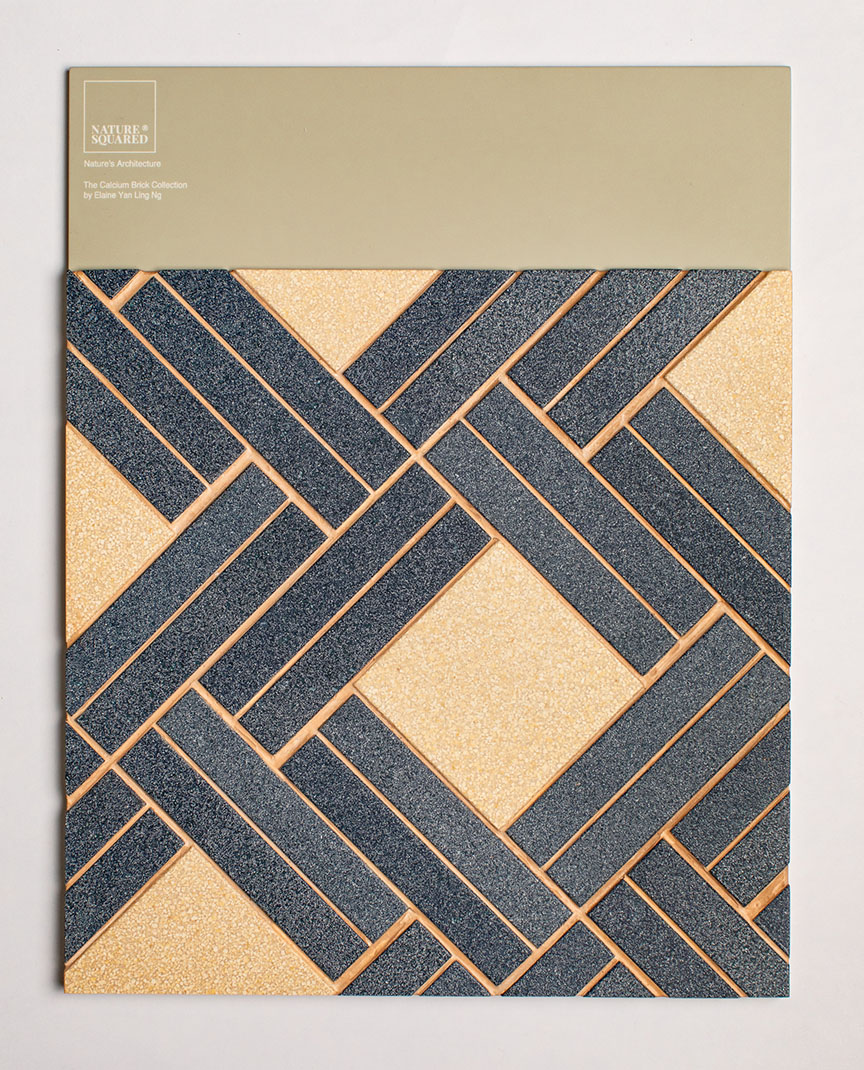
Nature Squared has a reputation for working on ultra-high net worth projects, and to date much of their work has been for bespoke design projects. Does CArrelé mark a move away from or an expansion of this market sector?
As their Chief Material Innovator, I can say that CArrelé marks a very important milestone for the company, building on their twenty-year experience of craftsmanship, and broadening the applicability of their offerings.
I love your title – Chief Material Innovator – so what comes next? What can we look forward to? You mentioned seashells?
CArrelé is the first of the calcium carbon materials that we are currently investigating. Waste seashell is our next target and, just like eggshell, there is an abundance of this natural material being wasted and sent to landfill.
